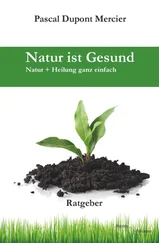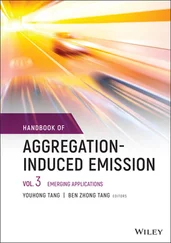Fatty acid ethyl esters have aromas of wax and honey. They are present at total concentrations of a few milligrams per liter.
Acetate esters of higher alcohols (isoamyl acetate and phenylethyl acetate) should also be included among the fermentation esters. These compounds are present in moderate quantities, but have intense, rather unusual odors (banana, rose, and honey). They contribute to the aroma complexity of naturally neutral wines, but may mask some varietal aromas.
Among these acetate esters, isobutyl acetate (or 2‐methylpropyl acetate) plays a role in enhancing fruity aromas (Cameleyre et al ., 2015). In contrast with most acetates of higher alcohols produced during alcoholic fermentation, this substituted acetate increases in concentration during tank/barrel aging and at the start of bottle aging. It is present in red wines in the form of its S enantiomer only, and its aroma is reminiscent of bananas. It is found at average concentrations of 72 μg/l, whereas its aroma perception threshold is about 1,100 μg/l. Nevertheless, despite its infra‐threshold concentration, it is known to contribute to black fruit, fresh fruit, and jammy notes in red wines.
The formation of all these esters is promoted when fermentation is slow (Bertrand, 1983; Dubois, 1993) and difficult, due to the absence of oxygen, low temperatures, and clarified must.
2.5.3 Substituted Acid Ethyl Esters
Short‐chain substituted acid ethyl esters exhibit special behaviors and have a particularly significant sensory impact. Recent studies (Pineau et al ., 2009; Lytra et al ., 2012, 2013, 2014, 2015), supported by older literature (Ribéreau‐Gayon et al ., 1982; Guth, 1997), have established that some of these esters are involved in the fruity aroma of red wines. In contrast with most linear fatty acid ethyl esters produced during alcoholic fermentation, these substituted esters increase in concentration during tank or barrel aging and at the beginning of bottle aging. It seems that these compounds are produced by alcoholic fermentation initially and then subsequently via a chemical pathway involving esterification of substituted acids, which are themselves produced during alcoholic fermentation (Diaz‐Maroto et al ., 2005; Lytra et al ., 2017).
TABLE 2.5Changes in Fatty Acid Ester Concentrations (in μmol/l) Depending on the Aging Time at 25°C and at Two Different pH Values (Garofolo and Piracci, 1994)
| Compounds |
|
pH = 3.00 |
pH = 3.50 |
| 0 months |
2 months |
5 months |
29 months |
0 months |
2 months |
5 months |
29 months |
| Hexyl acetate |
1.90 |
1.20 |
0.00 |
0.00 |
1.70 |
1.50 |
0.40 |
0.00 |
| Isoamyl acetate |
36.60 |
13.30 |
3.10 |
0.40 |
36.50 |
20.60 |
14.00 |
2.50 |
| 2‐Phenylethyl acetate |
11.00 |
2.40 |
0.50 |
0.50 |
4.80 |
3.40 |
2.60 |
0.88 |
| Ethyl hexanoate |
12.20 |
8.70 |
6.40 |
4.30 |
11.00 |
8.80 |
8.40 |
4.60 |
| Ethyl octanoate |
9.30 |
9.00 |
7.40 |
6.40 |
5.70 |
5.50 |
5.50 |
3.69 |
| Ethyl decanoate |
2.70 |
3.40 |
3.10 |
2.00 |
1.20 |
1.20 |
1.40 |
0.79 |
Their sensory importance is based not so much on their direct impact as on their ability to regulate the fruitiness of red wines, both in terms of its complexity and its intensity, in particular via perceptive interactions with other compounds (Pineau et al ., 2009; Lytra et al ., 2012, 2013, 2014, 2015; Cameleyre et al ., 2017).
Alkyl substituted short‐chain fatty acid ethyl esters
The overall contribution of these ethyl esters, which are present at concentrations below their aroma perception threshold, has been well known for several years (Pineau et al ., 2009). Ethyl 2‐methylpropanoate and ethyl 2‐methylbutanoate contribute to the blackberry notes of red wines. Ethyl 2‐methylbuanoate plays a role in enhancing fruitiness (Lytra et al ., 2014). The S enantiomer, whose aroma is reminiscent of green apples (Granny Smith) and strawberries, is almost exclusively found in red wines, at average concentrations of 50 μg/l. Its presence particularly intensifies the blackberry notes of wines.
Hydroxycarboxylic acid ethyl esters
In wines, ethyl 3‐hydroxybutanoate is present in its two enantiomeric forms (Lytra et al ., 2015). In red wines, its average S/R enantiomeric ratio is approximately 75/25 (±13), with an average total concentration of ~450 (±150) μg/l. Contents of the R form progressively increase during bottle aging, but there are no variations in concentration of the S form. Ethyl (3 S )‐3‐hydroxybutanoate is mainly described by solvent and alcohol notes, whereas ethyl (3 R )‐3‐hydroxybutanoate has a fruitier and butyric aroma. The individual perception thresholds of the (3 S ) and (3 R ) enantiomeric forms of ethyl 3‐hydroxybutanoate as well as that of their mixture (85/15, m/m) are, respectively, 21, 63, and 14 mg/l (Table 2.6), which confirms the absence of any direct impact of this ester on fruity aroma perception in wine, since the concentrations found (on the order of microgram per liter) are considerably lower than the thresholds. Nevertheless, even under these conditions, this compound contributes to the red fruit and fresh fruit aromas of red wines, thanks to specific perceptive interactions (Lytra et al ., 2015).
Alkyl substituted hydrocarboxylic acid ethyl esters
Ethyl 2‐hydroxy‐4‐methylpentanoate adds a blackberry note to wine (Falcao et al ., 2012). Its content is generally higher in red wines than in white wines of the same age (Lytra et al ., 2012). In general, white wines contain only the R form, while red wines have both enantiomers at ratios that depend on age. The highest concentrations of the S isomer are found in the oldest wines. The average R/S ratio for ethyl 2‐hydroxy‐4‐methylpentanoate in red wines is 95/5 (m/m). The perception threshold of ethyl (2 R )‐2‐hydroxy‐4‐methylpentanoate in a dilute alcohol solution is 126 μg/l or almost twice that of the S enantiomer (55 μl). This clearly shows that these thresholds are dependent on stereochemistry (Table 2.6). The perception threshold for the mixture of the two enantiomers ( R/S , 95/5 m/m) is 51 μg/l in a dilute alcohol solution. The two enantiomers have similar aromas, reminiscent of blackberries. In red wines, the presence of these compounds leads to a general intensification of aroma as well as increased fresh black fruit notes.
TABLE 2.6Main Substituted Esters and Their Impact on Red Wines
| Compounds |
Descriptors |
Average content in red wines (μg/l) |
Perception threshold in dilute alcohol solution (μg/l) |
Sensory impact |
| 2‐Methylbutyl (2 S )‐acetate |
Banana |
70 |
313 |
Enhancer of black fruit, fresh fruit, and jammy aromas |
| Ethyl (2 S )‐2‐methylbutanoate |
Green apple(Granny Smith), strawberry |
50 |
1.53 |
Enhancer of black fruit aromas |
| Ethyl (2 R )‐2‐hydroxy‐4‐methylpentanoate |
Blackberry |
400 |
126 |
Enhancer of black fruit and fresh fruit aromas |
| Ethyl (2 S )‐2‐hydroxy‐4‐methylpentanoate |
Blackberry |
20 |
55 |
| Ethyl (3 R )‐3‐hydroxybutanoate |
Fruity, butyric (cheese) |
80 |
63,000 |
Enhancer of black fruit and fresh fruit aromas |
| Ethyl (3 S )‐3‐hydroxybutanoate |
Solvent andalcohol |
350 |
21,000 |
Ethyl 2‐hydroxy‐3‐methylbutanoate, whose content increases during bottle aging, is present at the end of alcoholic fermentation in the R form only. The S enantiomer only appears later on (Gammacurta et al ., 2015; Lytra et al ., 2017).
Читать дальше












